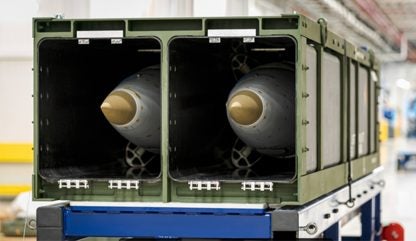
Lockheed Martin has secured a contract to accelerate the production of Precision Strike Missiles (PrSM) as the US Army aims to bolster its long-range capabilities amid evolving global threats.
The company, has clinched a $219m contract from the US Army to ramp up production of Precision Strike Missiles (PrSM). This award is the latest in a series of contracts signalling the growing demand for long-range surface-to-surface missiles.
The contract, the fourth of its kind, shows the Army’s commitment to enhancing its Early Operational Capability (EOC) with precision strike capabilities. The move follows the successful delivery of the first batch of PrSM units in December 2023, marking a milestone in modernising the Army’s firepower arsenal.
According to GlobalData’s US defence market intelligence, conventional land attack missiles is the third largest category at $18.3bn or 18.8%, covering items such as Lockheed Martin’s new Precision Strike Missile (PRSM), which is planned to replace the ATACAMS ballistic missile currently in service and donated to Ukraine.
“We’re proud to deliver this long-range deterrent capability to our Army customer and continue work to advance the program and production on an aggressive schedule,” said Jay Price, vice president of Precision Fires at Lockheed Martin.
The PrSM, designed to neutralise targets beyond 400km, represents the Army’s next-generation solution for precision strikes. With its open systems architecture and modular design, the missile offers flexibility and compatibility with existing launch platforms such as HIMARS and Multiple Launch Rocket System (MLRS).
In addition to bolstering production efforts, Lockheed Martin is leveraging digital tools, including augmented reality, advanced modelling and simulation, data analytics, and software factories to enhance development and streamline manufacturing processes.
According to GlobalData’s global missiles and missile defence systems market information, Lockheed Martin Corp will capture a 24.5% share of the North American missiles and missile defence systems market, with forecast revenue of $41.5bn over 2023–33.
As production accelerates, the Army is poised to conduct further testing this year, including an Army-led user test, to validate the missile’s performance and efficacy in real-world scenarios. With adversaries continuously advancing their capabilities, the US Army’s investment in PrSM reflects a strategic imperative to maintain a decisive edge in long-range precision strike capabilities.







